Selfies From The Animal Kingdom
Zoologist Roland Kays’ book “Candid Creatures” features wildlife photos taken with motion-sensing cameras.
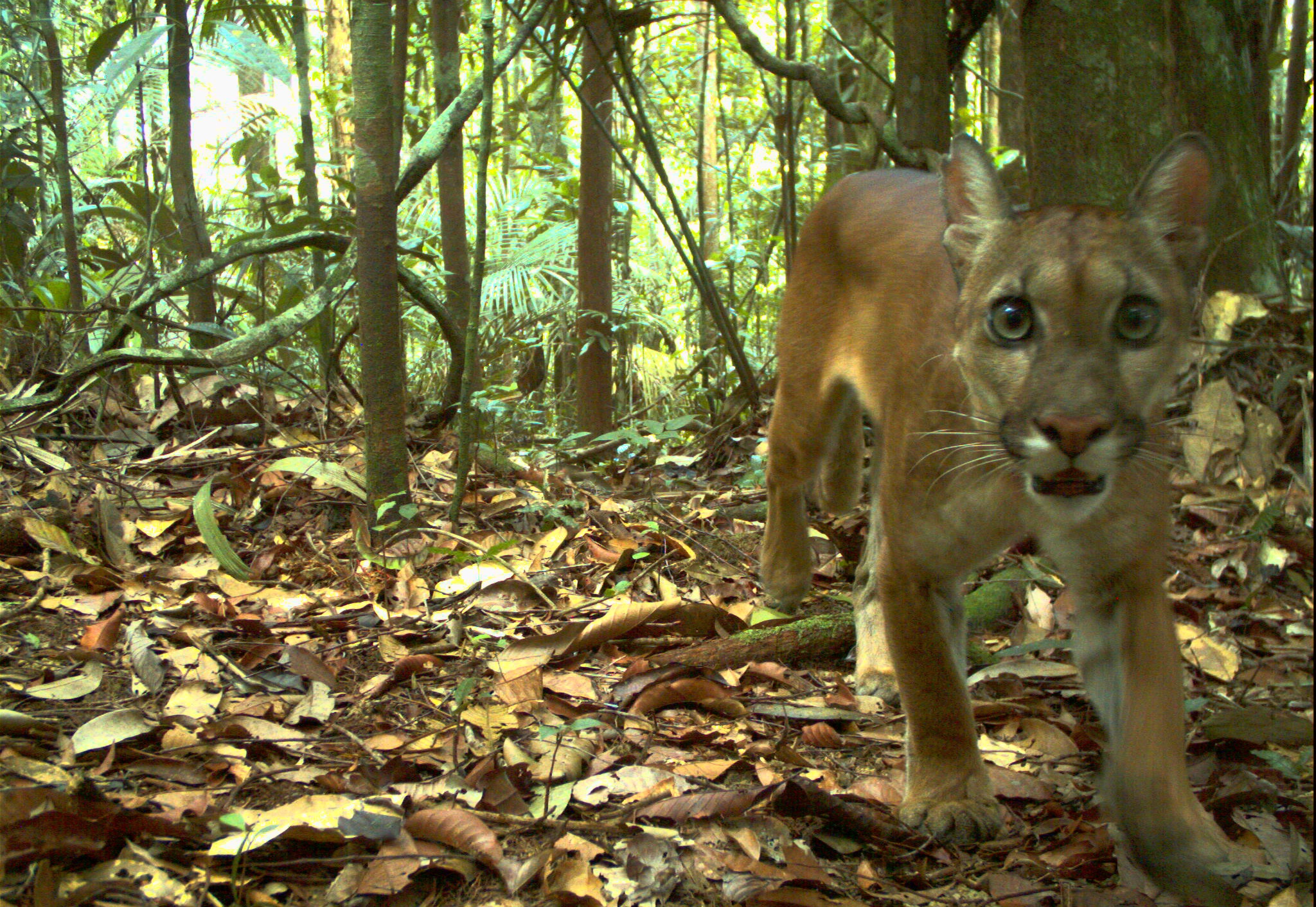
A camera trap in Manaus, Brazil, captures a cougar by surprise. Credit: TEAM Network and the Brazilian National Institute for Amazonian Research, Manaus, Amazon State, Brazil. Courtesy of "Candid Creatures: How Camera Traps Reveal the Mysteries of Nature," by Roland Kays (May 2016, Johns Hopkins University Press)
A new book of unabashed selfies has been released, but it reveals neither hide nor hair of a Kardashian. There is, however, plenty of hide and hair. Candid Creatures: How Camera Traps Reveal the Mysteries of Nature, by zoologist Roland Kays, is an album of wildlife photos captured with camera traps—devices that researchers install in the field to record members of the animal kingdom as they lope, scamper, or climb about their business. Kays’ book is also a rich summary of the insights that scientists have gained from using these tools.
In essence, modern camera traps work like this: When a warm-blooded animal (or a reptile heated by the sun) walks in front of the device, an infrared motion-sensing component detects a change in heat signature, which triggers a digital camera to snap a photo. It’s then up to the researchers to recover the memory card containing the footage.
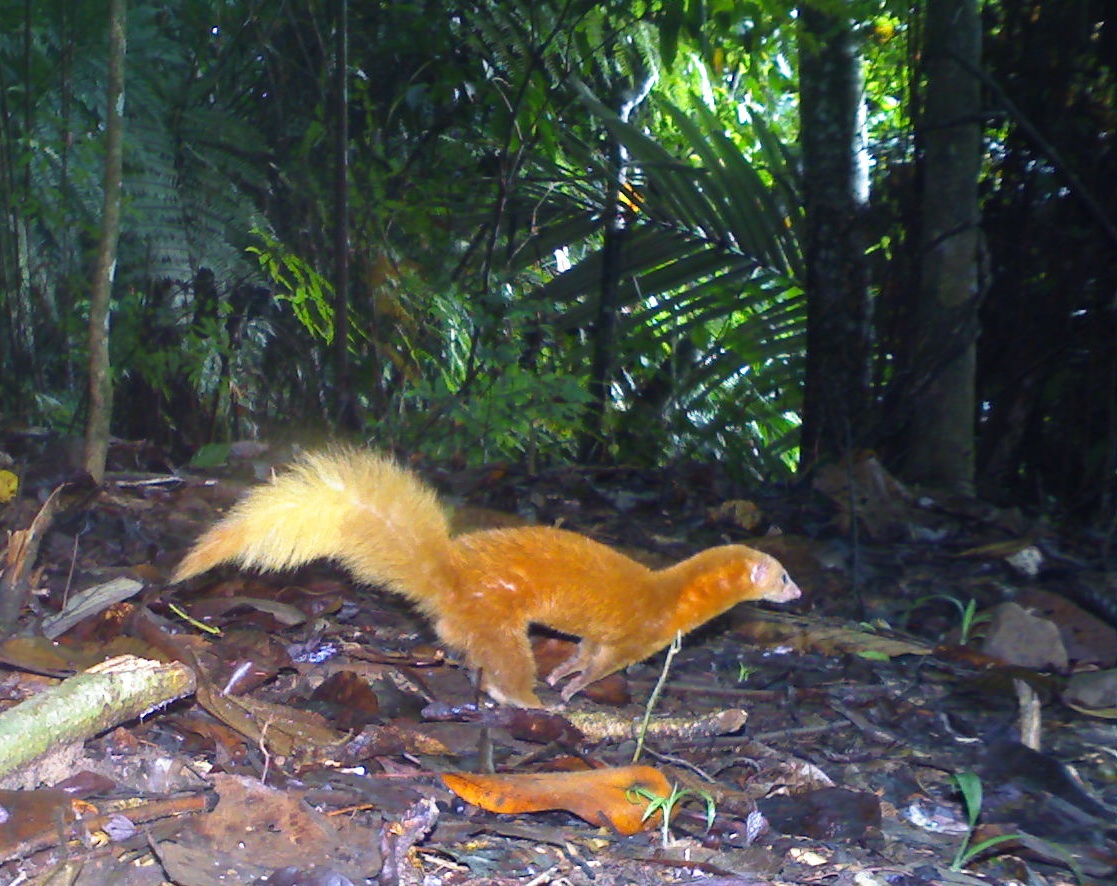
“It’s kinda like Christmas every time you open the camera trap and get to see what pictures you get,” says Kays, a research associate professor at North Carolina State University and the director of the Biodiversity Lab at the North Carolina Museum of Natural Sciences, who often uses camera traps in his work.
“Of course, there are millions of crappy pictures of animal butts,” he concedes, but when you hit upon a great shot of, say, a coyote in the middle of a frame, “you’re like, ah, that’s cool.” For Candid Creatures, Kays compiled what he calls the “greatest hits” of global camera trapping efforts, consisting of more than 600 photos from 153 research groups, including his own.
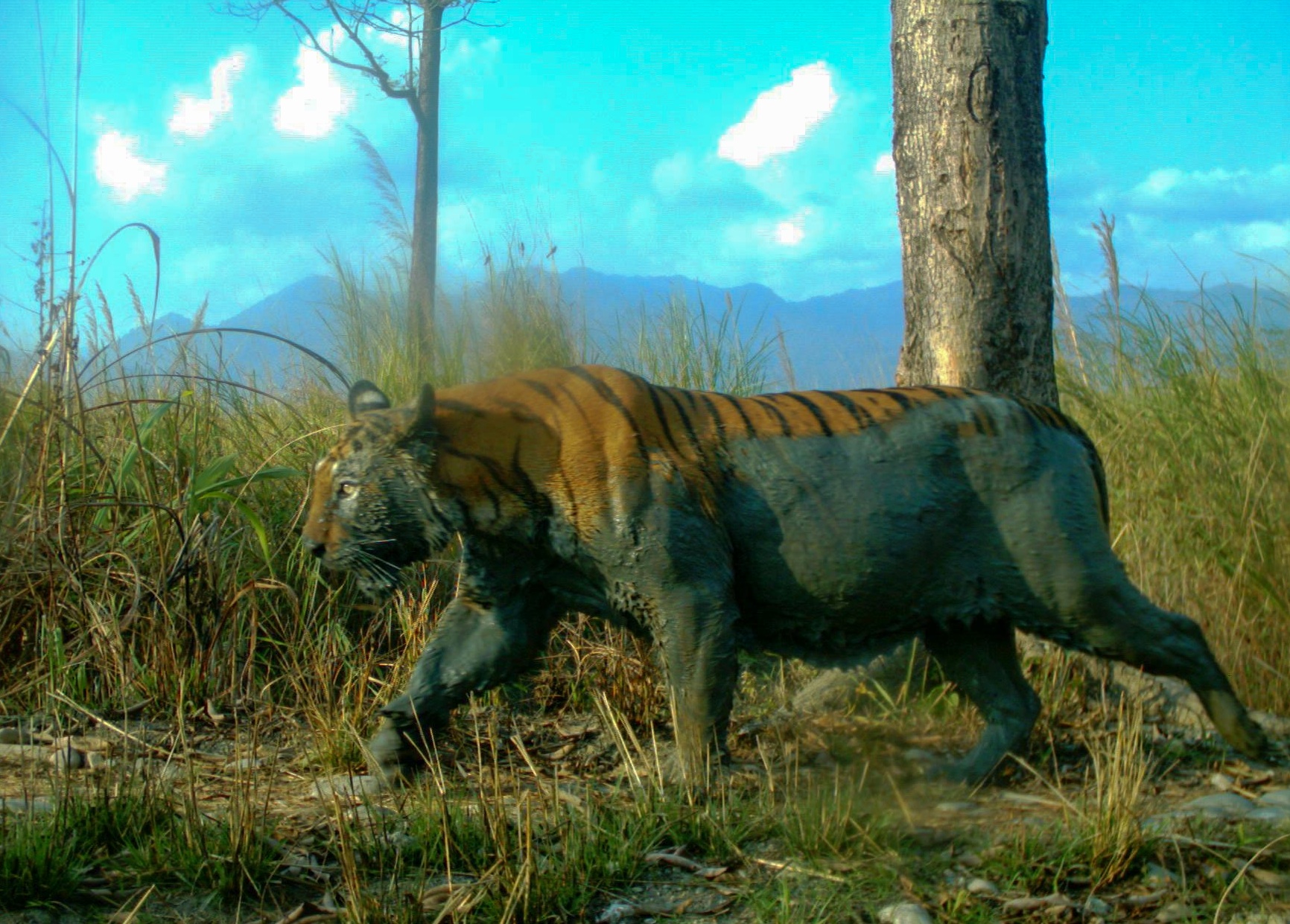
The pioneers in camera-trap research were scientists studying felids, or cats. “It was all about the tigers and the jaguars and these big species that were so endangered and so impossible to study any other way,” says Kays. Using camera-trap images, researchers can identify individual cats from their unique markings, enabling them to “estimate densities and numbers of animals and count them and track them over the years,” says Kays.
But these days, zoologists, field biologists, and even citizen scientists employ camera traps to spy on all sorts of animals, for various reasons. For instance, the footage might help them better understand the mere presence of species in an area, or how wildlife uses a certain resource, such as vegetation or a highway overpass.
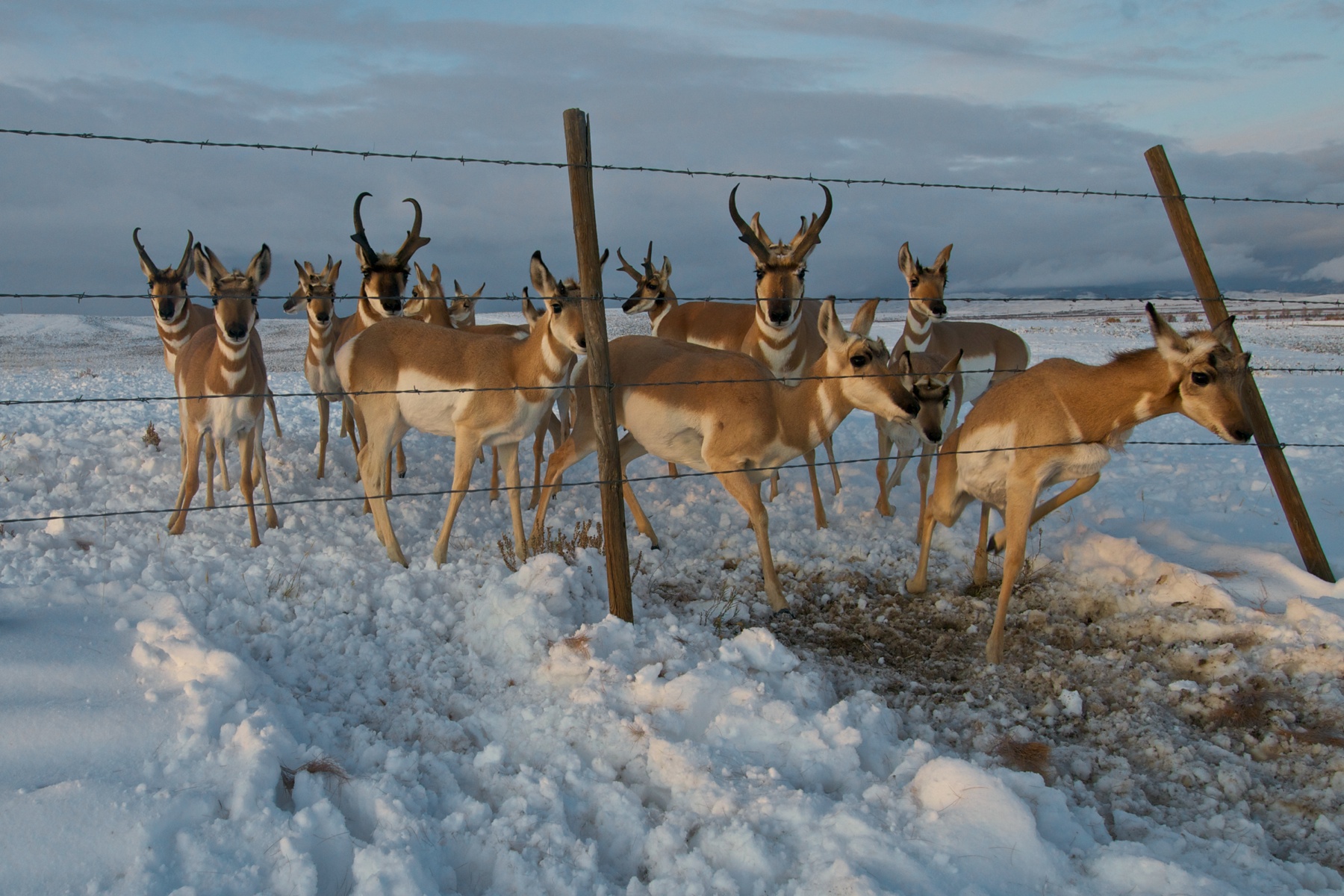
“Often the discoveries come later, once the images have been converted to numbers and summed up in a database. The resulting patterns of where animals are and are not present can reveal the forces of nature, and of humans, in determining which species survive where,” writes Kays in Candid Creatures.
As one example, Kays describes a large camera-trap survey exploring how hikers and hunters affect the distribution of wildlife in 32 protected areas across six states in the eastern U.S. Scientists worked with volunteers to set up traps and upload the photos as part of a citizen scientist project called eMammal, which Kays runs. The footage revealed that the nature preserves are “teeming with wildlife,” and that human use seems to have minimal impact on wildlife populations. “This is good news for the animals, as well as the animal lovers,” writes Kays.
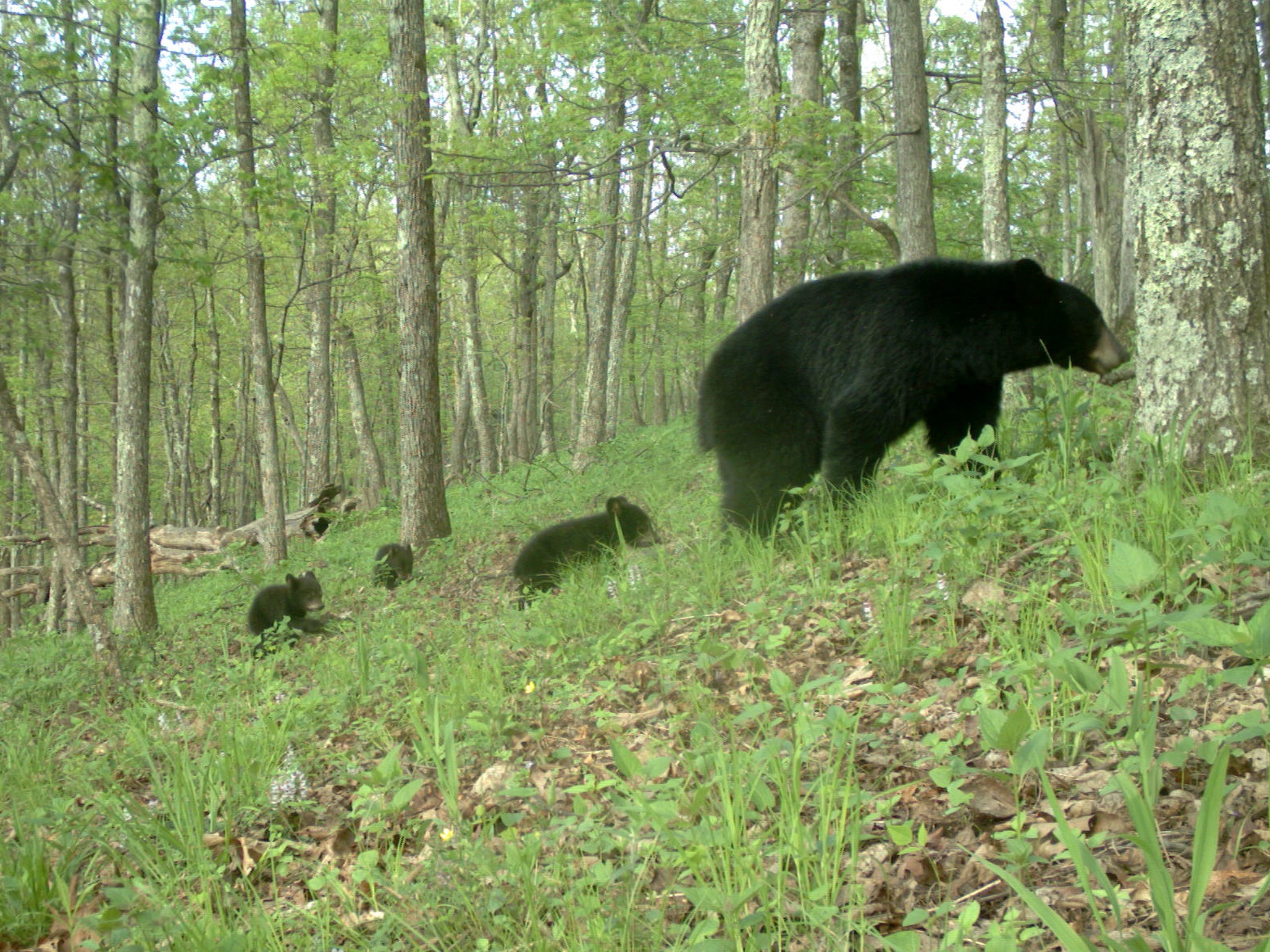
While the first camera trap was invented more than a century ago, the last decade has seen a boom in their use for scientific research, according to Kays. The spike coincides with improved camera durability and technology, such as integrated systems in which the motion sensor is part of the camera instead of wired on as an appendage.
And some researchers are taking camera-trapping technology to even greater heights—quite literally. A few years ago, a team including Tremaine Gregory, a research scientist at the Center for Conservation and Sustainability, part of the Smithsonian Conservation Biology Institute, and her co-investigator Farah Carrasco Rueda installed camera traps 100 feet up in the tree canopy of the Peruvian Amazon.
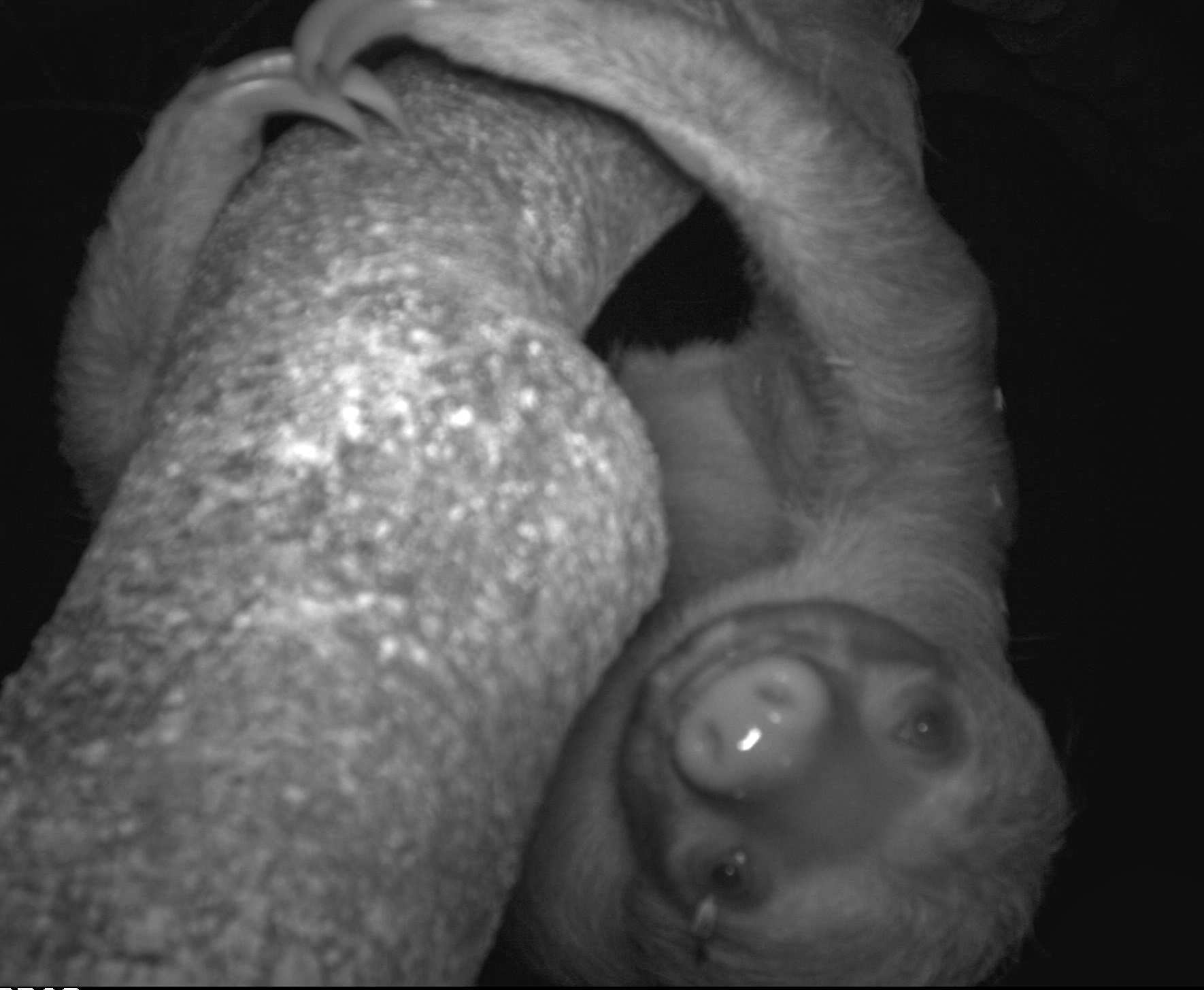
They described their technique—which involved completing a tree-climbing course to prepare for installation—in 2014 in Methods in Ecology and Evolution. As far as Gregory can tell, it’s the first recorded account of camera trapping so high up.
That study was part of a larger investigation into the extent to which animals use either the ground or interconnected tree branches—called canopy bridges—to traverse an area that had been cleared for a natural gas pipeline. (The Smithsonian Conservation Biology Institute had partnered with the natural gas company under a sponsored research agreement that funded the investigation. The final results haven’t yet been published.)
A primatologist by training, Gregory had anticipated seeing mostly monkey visages gracing the recovered arboreal footage. But “the diversity of animals that we found was one of the more surprising things,” she says.
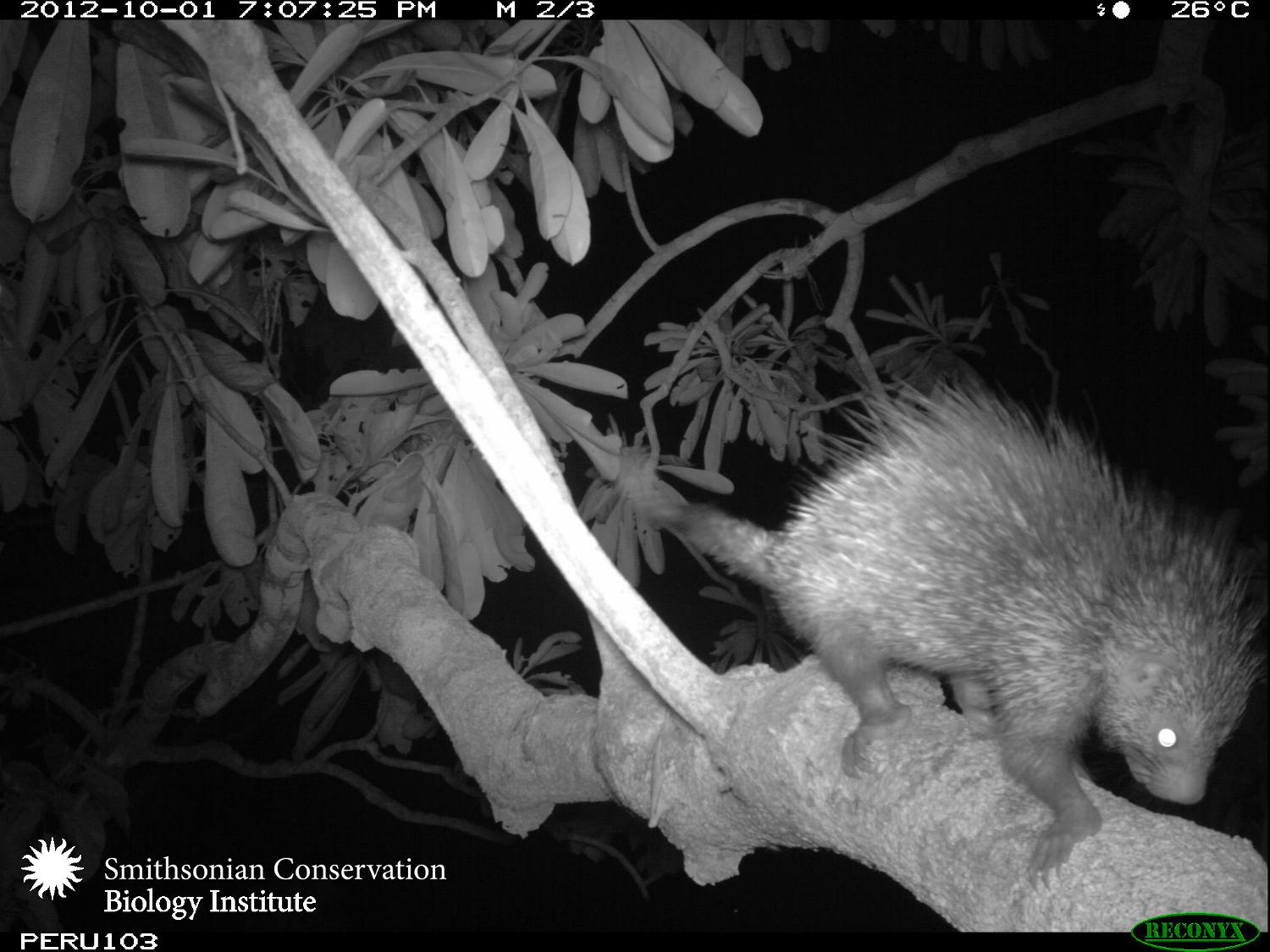
Over the course of a year, Gregory’s team recorded more than 20 mammal species using the canopy bridges, fewer than half of which were monkeys, and most of which traveled at night. One of those species was an unexpected commuter—a type of porcupine that they initially thought might be new to science.
Intrigued, the team decided to further investigate the spiny rodent. In a separate study appearing in the open-access journal ZooKeys, they confirmed that the creature was a known species of dwarf porcupine (Coendou ichillus) that “was far, far outside of its known range,” says Gregory—560 miles, in fact.
For Gregory, camera trapping offers a front-row seat to an unseen world. “It just reveals all the activity that’s going on under the radar,” she says.
Julie Leibach is a freelance science journalist and the former managing editor of online content for Science Friday.